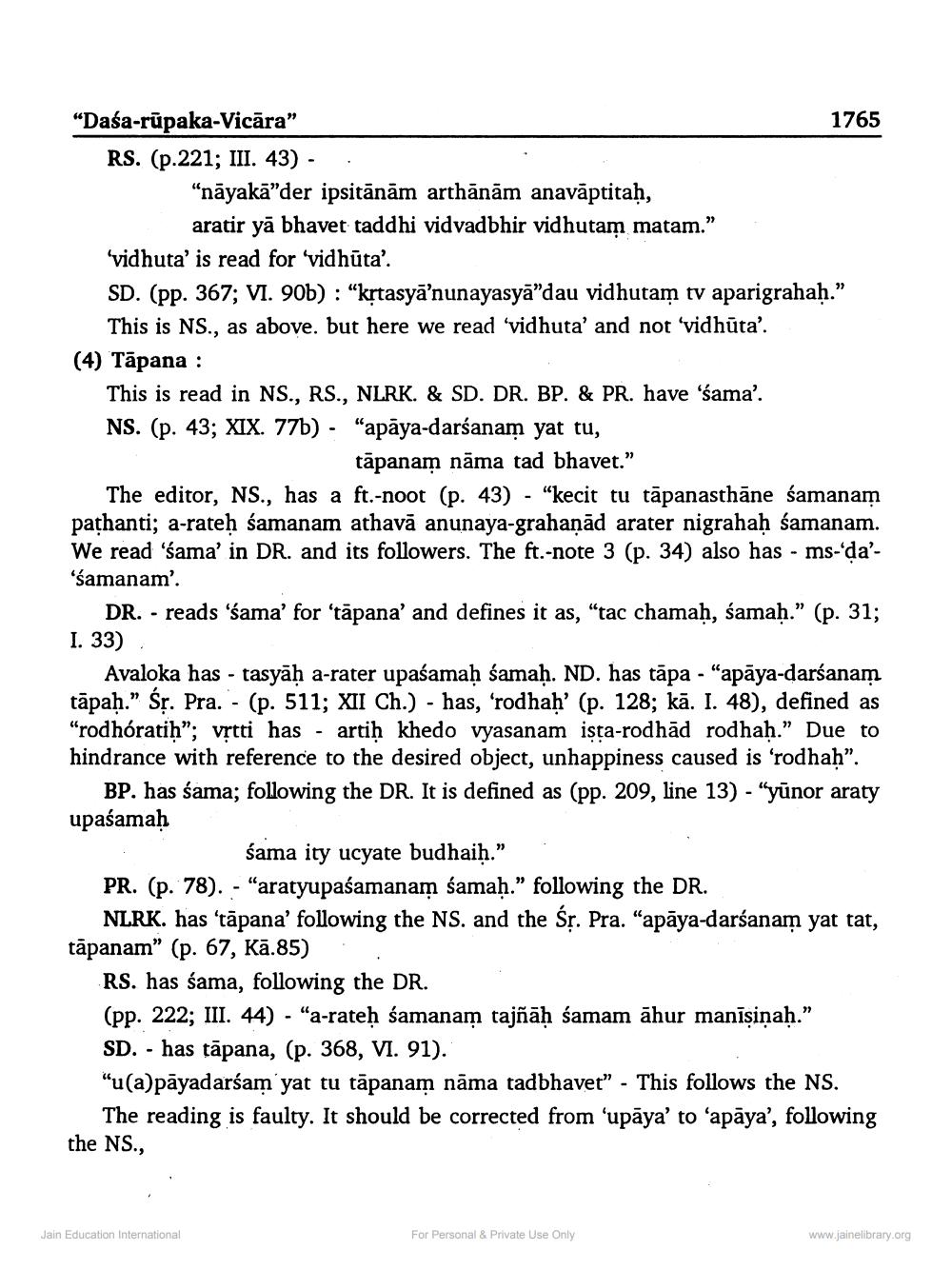________________
“Daśa-rūpaka-Vicāra”
1765 RS. (p.221; III. 43) -
“nāyakā’der ipsitānām arthānām anavāptitaḥ,
aratir yā bhavet taddhi vidvadbhir vidhutam matam." 'vidhura' is read for 'vidhūta'. SD. (pp. 367; VI. 90b) : “krtasyā’nunayasyā”dau vidhutam tv aparigrahah."
This is NS., as above. but here we read 'vidhuta’ and not 'vidhūta'. (4) Tāpana :
This is read in NS., RS., NLRK. & SD. DR. BP. & PR. have 'śama'. NS. (p. 43; XIX. 77b) - "apāya-darśanam yat tu,
tāpanam nāma tad bhavet." The editor, NS., has a ft.-noot (p. 43) - "kecit tu tāpanasthāne śamanam pathanti; a-rateh samanam athava anunaya-grahanad arater nigrahah samanam. We read 'sama' in DR. and its followers. The ft.-note 3 (p. 34) also has - ms-da’'samanam'.
DR. - reads 'sama' for 'tāpana' and defines it as, “tac chamaḥ, śamah.” (p. 31; I. 33)
Avaloka has - tasyah a-rater upaśamah samah. ND. has tāpa - "apāya-darśanam tāpah." śr. Pra. - (p. 511; XII Ch.) - has, frodhah' (p. 128; kā. I. 48), defined as "rodhoratih"; vrtti has - artih khedo vyasanam ista-rodhad rodhah." Due to hindrance with reference to the desired object, unhappiness caused is 'rodhah”.
BP. has sama; following the DR. It is defined as (pp. 209, line 13) - "yūnor araty upaśamah
sama ity ucyate budhaih.” PR. (p. 78). - "aratyupaśamanam śamah." following the DR.
NLRK. has tāpana' following the NS. and the śr. Pra. “apāya-darśanam yat tat, tāpanam” (p. 67, Kā.85) .
RS. has śama, following the DR. (pp. 222; III. 44) - "a-rateḥ śamanam tajñāḥ śamam āhur manīsinah." SD. - has tāpana, (p. 368, VI. 91). "u(a)pāyadarśam yat tu tāpanam nāma tadbhavet” - This follows the NS.
The reading is faulty. It should be corrected from 'upāya' to 'apāya', following the NS.,
Jain Education International
For Personal & Private Use Only
www.jainelibrary.org




